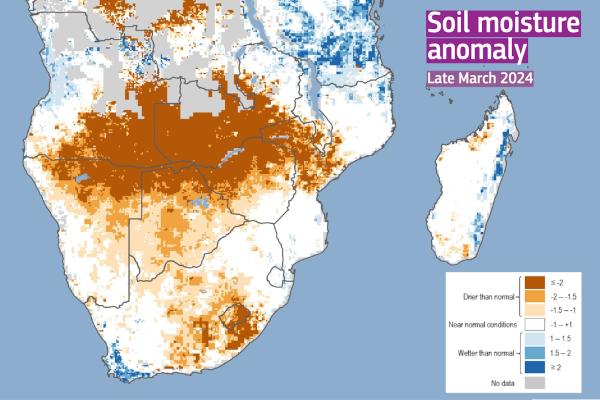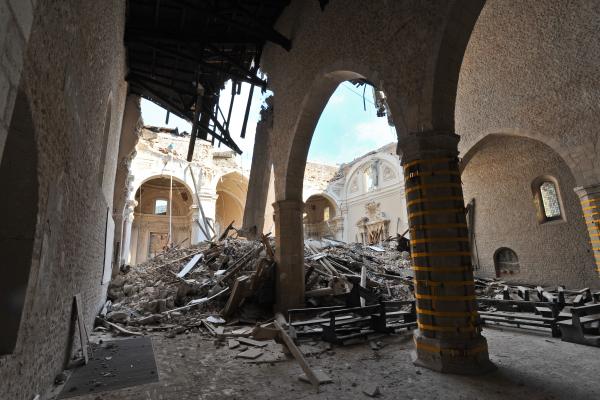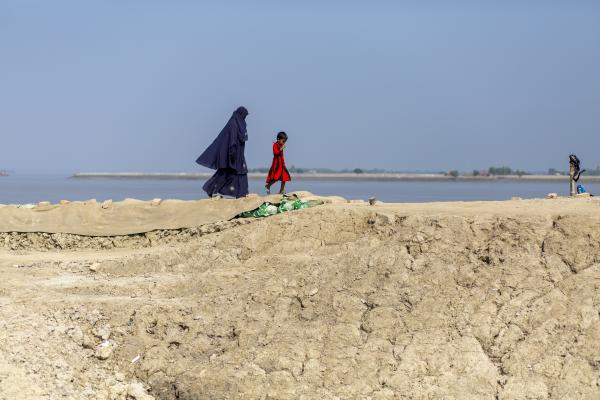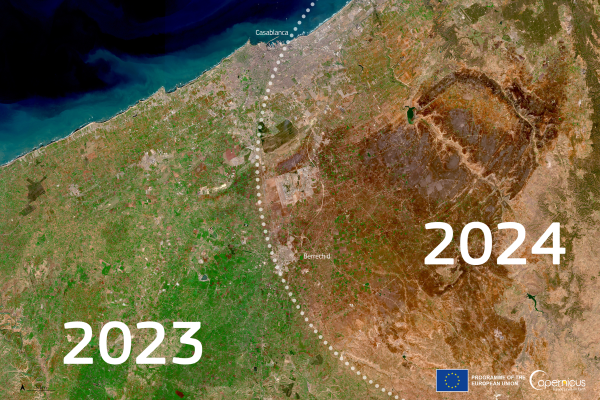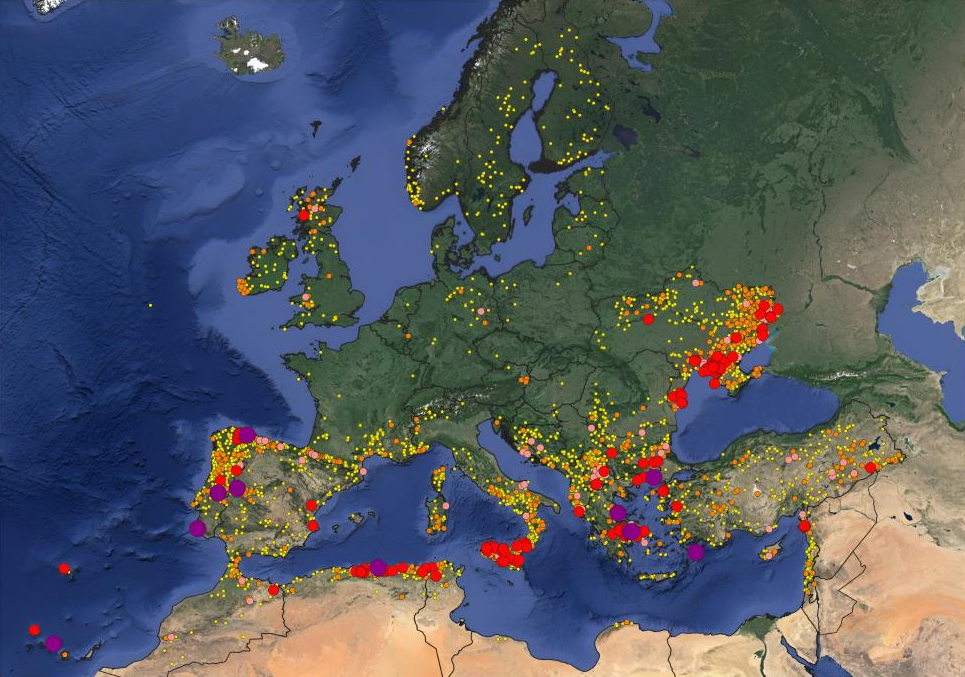
In 2023, an area around twice the size of Luxembourg was burnt in the EU, amounting to more than half a million (504,002) ha, according to the Advance report on Forest Fires in Europe, Middle East and North Africa 2023. So far in 2024, there have already been almost double the average number of fires for this time of the year, but without a major impact in terms of burnt areas.
The report is based on data provided by the JRC-managed European Forest Fire Information System (EFFIS) which maps wildfires in Europe and the adjacent regions since 2000.
Analysis by different types of vegetation for 2023 shows that 37% of the total burnt area was covered by shrubs and sclerophyllous vegetation, while 26% (120,000 ha) were forests.
The wildfires resulted in severe damage to the environment, producing some 20 megatonnes (Mt) of CO2 emissions – as estimated by EFFIS – equivalent to nearly a third of all emissions from international aviation in the EU in one year.
The 2023 fire season started with more fires in February and March than is usual, resulting in over 100,000 ha burnt in the EU. Some larger fires took place in Spain as early as March and May. However, the wildfire activity really peaked in the summer months, when fire danger conditions became critical in the Mediterranean region.
By the end of the year, the extent of the burnt area mapped by EFFIS reached 504,002 ha, trailing 2017 (988427 ha), 2022 (837212 ha) and 2007 (588388 ha), the three worst years this century.
High fire danger conditions – dry soil, low humidity and high winds – facilitate the ignition of wildfires and their propagation leading to potentially critical wildfire events, sometimes referred to as megafires. The burning intensity of these fires hampers the efficiency of traditional aerial firefighting techniques, which cannot bring them to control until the fire danger conditions improve and allow the intervention of ground firefighting teams.
In fact, 2023 saw the largest single fire ever to occur in Europe since the 1980s. Ignited on 19 August near Alexandroupoli (Greece), it resulted in a burnt area of over 96,000 ha and caused numerous human casualties. The occurrence of these types of severe wildfire events is related to very high and extreme wildfire danger conditions under climate change.
There are, however, ways to prevent such wildfires, for instance by employing nature-based solutions like vegetation management, increased preparedness by using wildfire early warning systems as well as being ready to deploy the efficient firefighting means that are made available through the EU Civil Protection Mechanism (UCPM) and the fire management services in EU countries.
At a global scale, 2023 was marked by unprecedented wildfires in many regions of the world, notably in Canada where the estimated burnt area amounted to over 18 million ha (roughly twice the size of Portugal).
What does the first data for 2024 show?
In 2024, droughts and high temperatures that may favor wildfire ignition and spread of wildfires are again being recorded in many areas of the world. The Copernicus Climate Change Service reported that February 2024 has been the warmest on record and the ninth consecutive warmest month. In Europe, wildfires have been recorded in many areas, especially in mountain ranges across the northern areas of the Iberian peninsula.
By mid-March a high number of fires – 1227 – above the average of 645 for this time of the year in the EU, have been mapped by EFFIS, although these did not have major impact in terms of burnt areas.
Background
The Advance report on Forest Fires in Europe, Middle East and North Africa 2023 describes the conditions under which wildfires developed and their impact across the pan-European territory, with an emphasis on the situation in the EU. This report is regularly published by the European Commission’s Joint Research Centre (JRC) to facilitate the access to data and information on the previous year’s fire campaign.
It is available prior to the publication of the annual report of Forest Fires in Europe, Middle East and North Africa, which will include individual chapters provided by the wildfire administrations in the countries of the EFFIS network, currently gathering 40 countries, and will come out in October this year.
Related links
Advance report on Forest Fires in Europe, Middle East and North Africa 2023
European Forest Fire Information System (EFFIS)
Details
- Publication date
- 10 April 2024
- Author
- Joint Research Centre
- JRC portfolios

